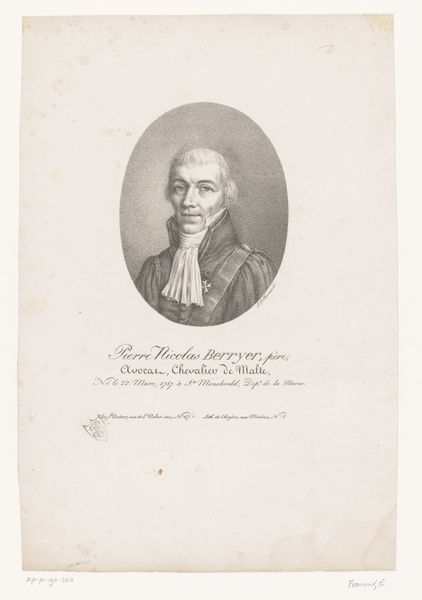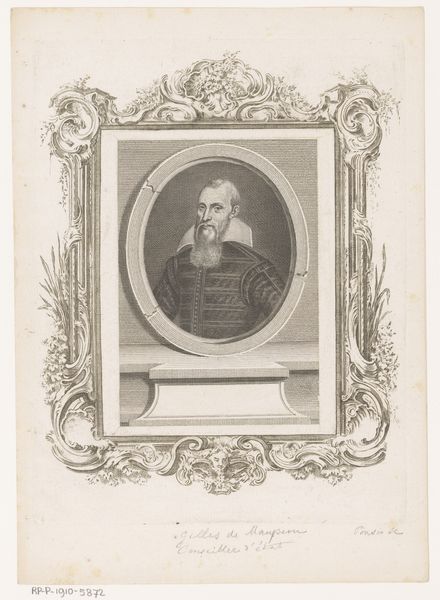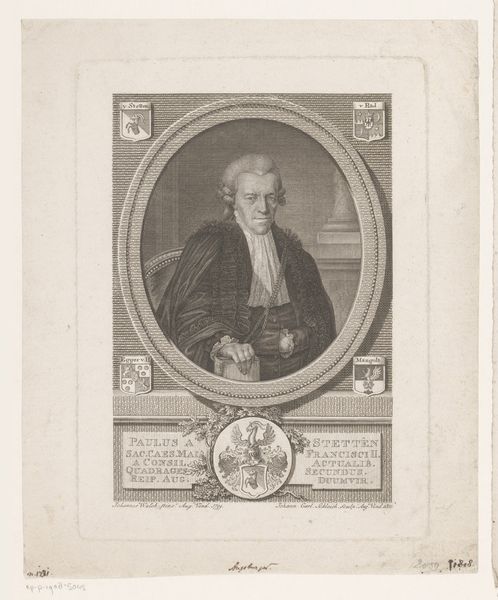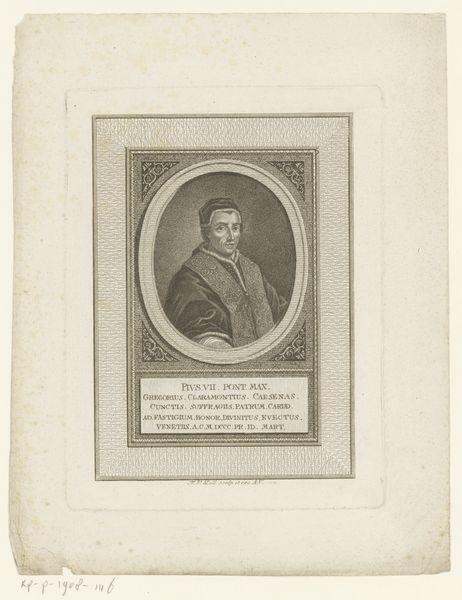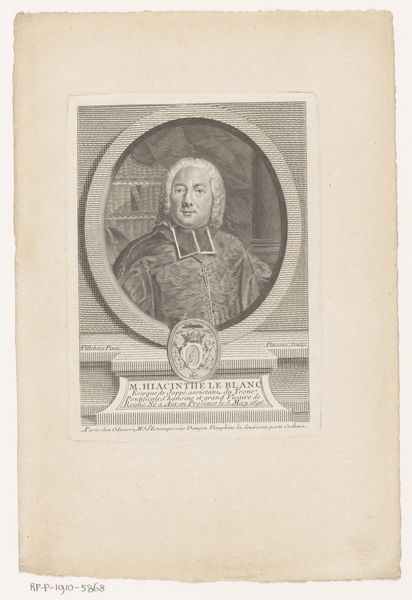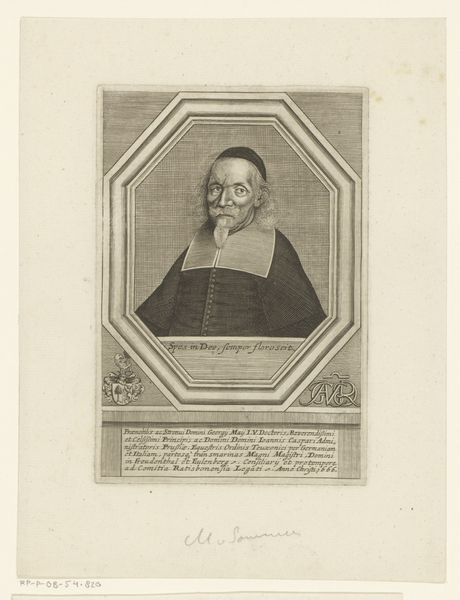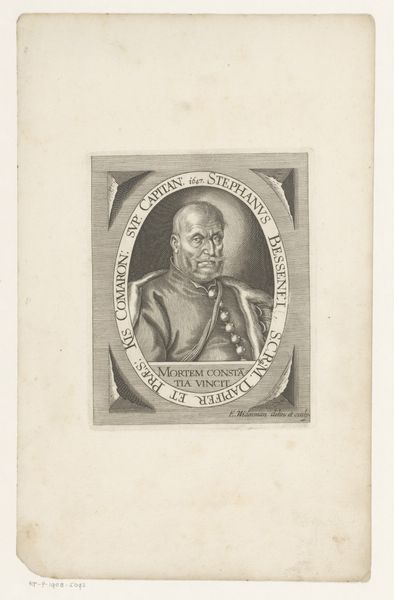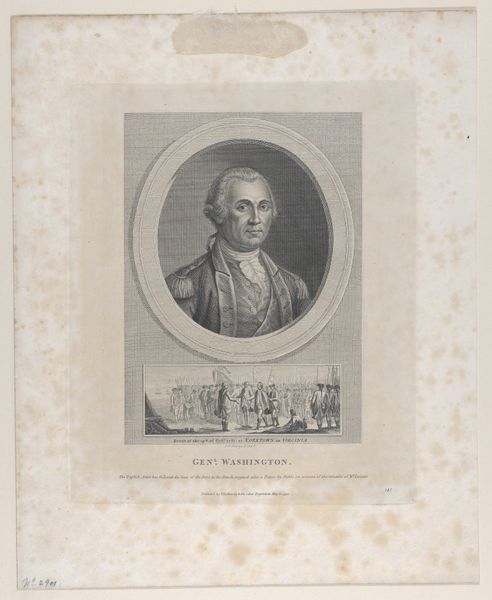
Portret van Pius VII in ovaal met onderaan pauselijk insignia 1814
0:00
0:00
print, etching, engraving
#
portrait
#
neoclacissism
# print
#
etching
#
history-painting
#
academic-art
#
engraving
Dimensions: height 254 mm, width 170 mm
Copyright: Rijks Museum: Open Domain
Editor: This is an etching and engraving from 1814, a "Portret van Pius VII in ovaal met onderaan pauselijk insignia," by Wilbrod Magloire Nicolas Courbe. The portrait is quite formal, and almost severe. What's your read on this work? Curator: It's fascinating how this print participates in image-making as a tool of power. This portrait comes right after Pius VII’s return to Rome from being held captive by Napoleon. Consider how this image circulates. How does it re-establish Papal authority after such a turbulent period? It's not just a portrait, it's a carefully constructed piece of political messaging. Editor: So the severity is intentional, part of that messaging? To project strength? Curator: Precisely. And it’s worth looking at the visual language. Note the neoclassical style. What does the choice of this particular style suggest in terms of papal messaging to audiences of that period? How do you see the choice of the visual frame adding to the artwork? Editor: It creates a sense of authority. The classical framing emphasizes order and a return to tradition. It's interesting to consider the target audience and how they would perceive it. Curator: Exactly. The print would have been disseminated widely, solidifying Pius VII's image and reinforcing the Church’s restored power throughout Europe, influencing public perception in a specific context and time. And for us, now, how does it help us to view and understand 19th-century Europe differently? Editor: Thinking about it as political messaging changes my perspective completely. I now understand its relevance in visual culture! Curator: And how the image’s role went beyond simply portraying the Pope's likeness. Hopefully, considering this image politically reveals new avenues for its interpretation and further study.
Comments
No comments
Be the first to comment and join the conversation on the ultimate creative platform.
